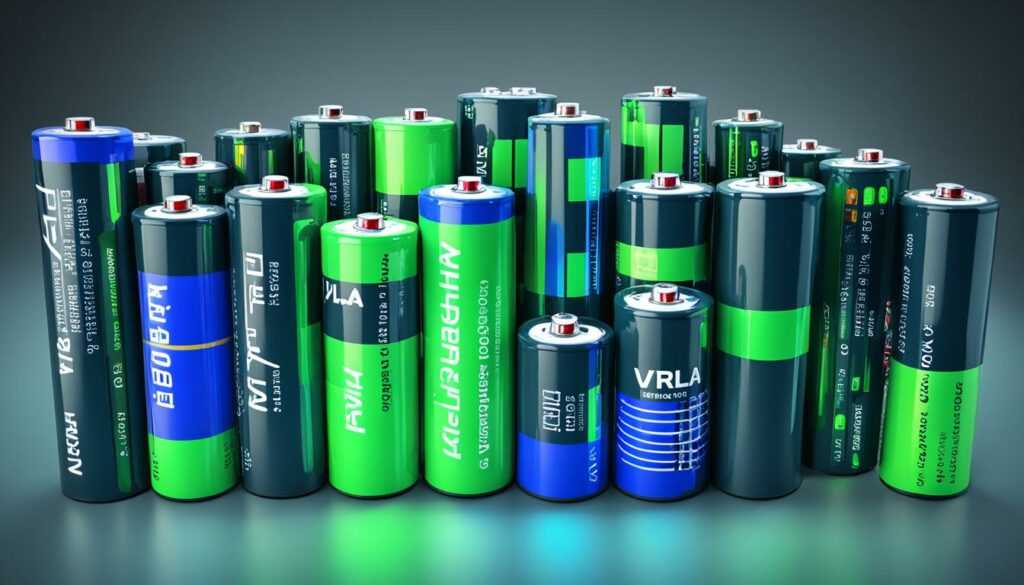Valve Regulated Lead Acid (VRLA) batteries are a type of sealed lead-acid battery that has revolutionized energy storage across various sectors. Known for their reliability, low maintenance, and versatility, VRLA batteries are widely used in applications ranging from telecommunications to renewable energy systems. This article explores the fundamental aspects of VRLA batteries, their applications, advantages, and maintenance tips to ensure optimal performance.
What Are VRLA Batteries?
VRLA batteries are designed with a sealed construction that prevents the escape of electrolyte and gas. They utilize a limited amount of electrolyte absorbed in a separator or gelled form, allowing them to operate safely in any orientation. The valve-regulated design incorporates safety features that maintain internal pressure and prevent leaks, making them ideal for various applications.
Types of VRLA Batteries
There are primarily two types of VRLA batteries:
- Absorbent Glass Mat (AGM): These batteries use fiberglass mats to absorb the electrolyte, providing a stable environment for the lead plates. AGM batteries are known for their high discharge rates and fast charging capabilities.
- Gel Batteries: Gel batteries contain silica dust mixed with the electrolyte, forming a thick gel. This design reduces the risk of spillage and enhances safety while offering good performance in deep cycle applications.
Applications of VRLA Batteries
VRLA batteries are utilized across multiple industries due to their adaptability and reliability:
- Telecommunications: They serve as backup power sources for cell towers and data centers, ensuring uninterrupted communication during power outages.
- Uninterruptible Power Supplies (UPS): VRLA batteries provide essential backup power for critical systems in hospitals, data centers, and other facilities where downtime is not an option.
- Renewable Energy Systems: These batteries store excess energy generated by solar panels and wind turbines, enabling users to harness renewable energy effectively.
- Automotive Applications: VRLA batteries are commonly used as starting batteries in vehicles due to their ability to deliver high bursts of power.
- Marine and RV Use: Deep cycle VRLA batteries are favored for powering lighting, appliances, and propulsion systems when traditional power sources are unavailable.
Advantages of VRLA Batteries
VRLA batteries offer several benefits that make them a popular choice for various applications:
- Maintenance-Free Design: Their sealed construction eliminates the need for regular water topping-up required by traditional flooded lead-acid batteries.
- Spill-Proof and Leak-Resistant: The design prevents acid spills and leaks, enhancing safety during handling and installation.
- Longer Cycle Life: Compared to flooded lead-acid batteries, VRLA batteries typically offer a longer cycle life, making them suitable for demanding applications.
- Fast Charging Capabilities: VRLA batteries can accept higher charging currents, allowing for quicker recharging compared to other battery types.
- Low Self-Discharge Rate: They can hold their charge for extended periods, making them reliable for backup power applications.
- Improved Safety Features: The valve-regulated design includes pressure-relief valves that release excess gas, reducing the risk of explosion or damage due to overcharging.
Maintenance Tips for VRLA Batteries
While VRLA batteries are marketed as maintenance-free, they still require regular inspections and care to ensure longevity:
- Regular Inspections: Check for physical damage, leaks, or corrosion on terminals. Ensure that connections are clean and tight to prevent performance issues.
- Proper Charging Practices: Follow manufacturer guidelines regarding charging voltages and currents. Overcharging can lead to excessive gassing and reduced battery life.
- Temperature Management: Keep the battery within recommended temperature ranges to prevent overheating or freezing conditions that could damage it.
- Avoid Over-Discharge: Monitor battery usage to avoid deep discharges that can cause irreversible damage. Implement low voltage alerts if necessary.
Latest News
Recent advancements in battery technology have highlighted several important trends regarding VRLA batteries:
- Increased Demand in Renewable Energy Storage: As more consumers adopt solar power systems, the demand for efficient energy storage solutions like VRLA batteries is rising.
- Innovations in Battery Management Systems (BMS): New BMS technologies are enhancing the safety and efficiency of VRLA battery operations by optimizing charging cycles and monitoring health metrics.
- Sustainability Initiatives: Manufacturers are focusing on environmentally friendly practices in battery production and recycling processes to minimize ecological impact.
These trends reflect the growing importance of reliable energy storage solutions in modern energy management systems.
Redway Expert Comment
In our extensive experience at Redway Battery, we recognize that Valve Regulated Lead Acid (VRLA) batteries play a crucial role in various sectors due to their reliability and low maintenance requirements. As we continue to innovate in lithium LiFePO4 technology, we appreciate the established benefits of VRLA systems while emphasizing the importance of proper care and usage practices to maximize their lifespan.” In conclusion, Valve Regulated Lead Acid (VRLA) batteries are essential components in many modern applications due to their versatility, safety features, and ease of use. By understanding their characteristics and following best practices for maintenance, users can ensure optimal performance from these reliable power sources.




